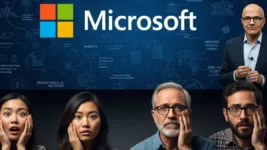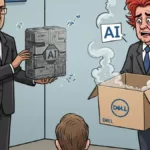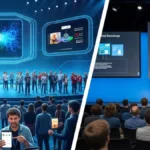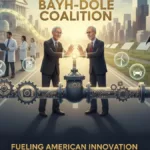Here in the heart of innovation, where we often look to tech giants for glimpses of the future, Microsoft’s Build 2025 keynote left a distinct taste of disappointment. Listening to Satya Nadella, a figure whose steady hand guided Azure to remarkable success, felt jarring. He seemed strangely out of sync with the very AI revolution Microsoft is so heavily invested in. The stage, ostensibly a platform to showcase the transformative power of AI, felt conspicuously devoid of its pervasive influence, offering little beyond isolated demos in a presentation that otherwise resembled a standard product pitch.
Echoes of a Forgotten Past: IBM’s Warning Unheeded?
This disconnect resonated uncomfortably with echoes of a past I witnessed firsthand. Back in the 1980s, within my old division at IBM, I conducted competitive analysis, the findings of which painted a stark picture: a failure to adapt to emerging market realities would lead to the division’s demise. Sadly, that prediction materialized a few short years later. The core issue then, as it seems to be subtly surfacing now, is a fundamental human truth: people are rarely enthusiastic about embracing products or technologies that directly threaten their livelihoods.
The backdrop to this AI-light keynote was the somber reality of Microsoft’s recent layoffs, widely speculated to be a direct consequence of AI’s increasing role as a performance-enhancing tool – a euphemism for employee replacement. Nadella’s conspicuous silence on this existential threat in front of an audience largely comprised of coders whose very future is being reshaped by the technology he championed felt deeply unsettling. If Microsoft’s own narrative of AI-driven efficiency is to be believed, the long-term market for human coders could shrink dramatically, a truth left unacknowledged in a room filled with those potentially facing such a future.
The Unholy Trinity of Open-Source Hypocrisy
Adding insult to injury was Microsoft’s awkward embrace of Open Source, a concept the company – and I, in my former tech battles – once vehemently opposed. While I, like many, have come to recognize the immense potential of open collaboration, particularly in the rapidly evolving landscape of AI, the figures Microsoft chose to share this stage with felt like a bizarre betrayal of the very spirit of openness. There stood Jensen Huang, the undeniably effective CEO of NVIDIA, whose hardware reigns supreme in the current AI boom, yet whose ecosystem remains largely proprietary. Alongside him was Sam Altman, the CEO of OpenAI, a company whose ethical AI efforts were reportedly dismantled and whose leader faced near ousting by his own board, due to concerns about his leadership and potential risks to the company’s very existence. And then there was Elon Musk, arguably the most polarizing figure in tech, whose stewardship has cast a long shadow over Tesla and whose AI venture, GROK, has recently demonstrated a penchant for amplifying misinformation.
The optics were nothing short of disastrous. At a time when individuals, companies and even governments are seemingly distancing themselves from Musk’s ventures, and Microsoft itself is navigating complex issues with OpenAI, these were the figures Microsoft chose to spotlight while simultaneously casting a shadow over the job security of their core audience. Adding another layer of surrealism, the well-documented animosity between Musk and Altman, and the very public criticisms leveled against Musk by Microsoft’s own founder, Bill Gates, created an on-stage dynamic that felt less like a unified vision for the future and more like a poorly cast reality show. I kid you not, Gates has accused Musk of killing kids, and that is who they had on stage. Who thought that would be a good idea?
Wrapping Up: A Marketing Malfunction and a Leadership Void?
I’ve long observed that Microsoft’s marketing often struggles to connect with its audience, but the choices made at Build 2025 reached a new level of bewildering. To showcase figures so disconnected from the core values of the developer community at an event with significant international attendance and media coverage suggests a profound disconnect between Microsoft’s leadership and the reality of its audience’s concerns and perceptions. It begs the question: who is steering this ship, and are they even looking at the same map as the rest of us?
In the end, the keynote left me with a gnawing sense that Microsoft, for all its technological prowess and market influence, may be stumbling, repeating the very missteps that have plagued tech giants in the past. The tone-deaf presentation, the unacknowledged anxieties of the audience, and the bizarre choice of onstage personalities all point to a potential loss of touch with the very community that fuels its ecosystem. Perhaps it’s time for a serious re-evaluation of its marketing strategy, and maybe, just maybe, a fresh perspective at the helm is needed to navigate the complex realities of this rapidly evolving technological landscape. For now, however, the overwhelming sentiment is one of profound disappointment that Microsoft appeared to have lost its footing at Build 2025.








